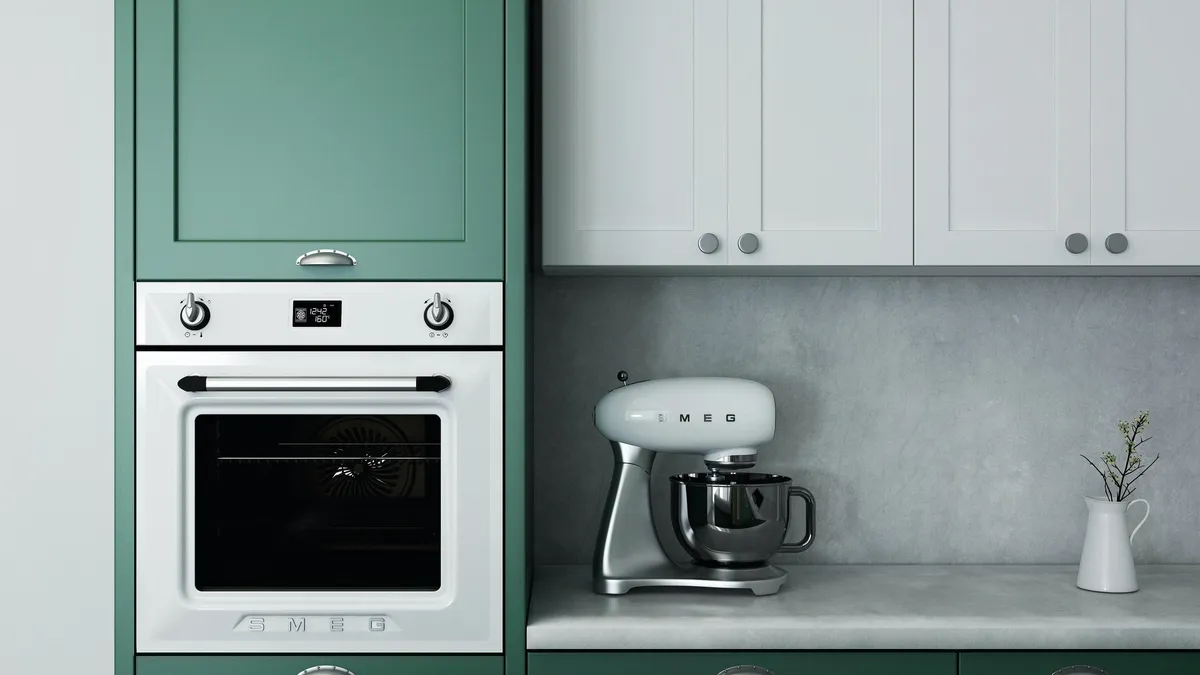Painting your kitchen cabinets is one of the most affordable and transformative upgrades you can make in your home. But achieving a long-lasting, professional-looking result depends heavily on one key factor—choosing the best paint for kitchen cabinets.
This guide breaks down everything you need to know about selecting the right paint, prepping your surfaces, and applying it for a flawless, durable finish. Whether you’re a DIYer or hiring a pro, these insights will help you create cabinetry that looks stunning and stands the test of time
Why Choosing the Right Cabinet Paint Is Crucial
Your kitchen is one of the busiest areas in your home. Cabinets are constantly opened, closed, cleaned, and exposed to moisture, grease, and heat. Regular wall paint simply can’t handle this kind of daily stress.
The best paint for kitchen cabinets is specifically formulated to resist chipping, fading, and staining. It provides a hard, durable surface that can be wiped clean without losing its luster. Choosing the wrong paint may leave you with peeling or sticky cabinets within months, while the right one keeps your kitchen looking freshly painted for years.
Key Criteria for the Best Paint for Kitchen Cabinets
When selecting cabinet paint, it’s important to look beyond color. The following features are essential:
1. Durability & Hardness
Cabinets endure constant wear and tear, so a hard, resilient finish is a must. The best cabinet paints dry to a tough, furniture-like surface that resists scratches, chips, and cleaning chemicals.
2. Adhesion & Bonding
Since most cabinets have glossy or sealed surfaces, your paint must bond tightly. Look for formulations with superior adhesion, especially if you’re painting over a previously finished or laminated surface.
3. Self-Leveling Finish
Self-leveling paints reduce brush and roller marks, helping even beginners achieve a factory-smooth result. This property is particularly valuable for doors and drawer fronts.
4. VOCs, Odor & Dry Time
Low-VOC paints are safer indoors and more pleasant to work with. Quick-drying options allow you to recoat faster and minimize downtime in your kitchen.
5. Sheen & Cleanability
The sheen you choose affects both the look and the ease of maintenance. Satin or semi-gloss finishes strike a balance between elegance and practicality.
Types of Paints: best paint for kitchen cabinets
Let’s break down the main types of cabinet paint and when to use them.
Water-Based Paints (Acrylic or Latex)
Modern water-based paints are easy to apply, dry quickly, and have low odor. They’re ideal for DIY projects and smaller spaces. High-quality acrylic paints now offer impressive durability and color retention.
Alkyd or Waterborne Alkyd Paints
These blends combine the best of both worlds: the hardness and smoothness of oil paint with the easy cleanup of water-based formulas. They’re a top choice for achieving a professional, long-lasting finish.
Hybrid or Urethane-Modified Paints
Hybrid paints are engineered for cabinet-level durability. They cure into a rock-hard surface resistant to scratches and stains while remaining low-odor and user-friendly.
Traditional Oil-Based Paints
Once the go-to for cabinetry, oil-based paints are less common today due to strong fumes and longer curing times. However, they still deliver a rich, smooth finish and exceptional durability when properly applied.
Top Product Recommendations best paint for kitchen cabinets
Here are some of the best-rated paints for kitchen cabinets used by professionals and serious DIYers alike:
| Paint | Best For | Key Features |
|---|---|---|
| Sherwin-Williams Urethane Trim Enamel | Busy kitchens needing ultra-durable finishes | Hard, smooth, self-leveling, fast-drying, and easy to clean |
| Benjamin Moore Advance (Waterborne Alkyd) | Professional-looking finishes | Flows beautifully, self-levels, and cures to a hard shell |
| Sherwin-Williams Emerald Urethane Enamel | Premium projects | Extremely durable, washable, and color-retentive |
| INSL-X Cabinet Coat (Urethane Acrylic) | DIY-friendly option | Affordable, excellent adhesion, and solid durability |
| Fusion Mineral Paint | Eco-conscious projects | Non-toxic, low-VOC, and requires minimal prep (best for light-use areas) |
When choosing the best paint for kitchen cabinets, consider your kitchen’s activity level, your budget, and the type of material your cabinets are made of.
How to Choose the Right best paint for kitchen cabinets
The sheen affects not only appearance but also how easy your cabinets are to maintain.
- Flat / Matte: Minimal shine but hard to clean; not ideal for kitchens.
- Satin: Soft glow, hides imperfections well, and easy to wipe down.
- Semi-Gloss: Most popular choice—durable, moisture-resistant, and perfect for high-traffic areas.
- High-Gloss: Reflective and modern, but shows fingerprints and flaws easily.
For most kitchens, a semi-gloss or satin finish provides the perfect blend of durability and aesthetic appeal.
Surface Preparation best paint for kitchen cabinets
Preparation is the foundation of any long-lasting paint job. Follow these essential steps:
- Remove Doors, Drawers, and Hardware. Label everything to make reassembly easy.
- Clean Thoroughly. Use a degreaser or TSP solution to remove oil, dirt, and residue.
- Sand Surfaces. Lightly sand with 180–220 grit paper to create a surface that the paint can grip.
- Repair and Fill Imperfections. Use wood filler for dents or holes, then sand smooth.
- Prime the Surface. A high-quality bonding primer ensures even color and better adhesion.
- Remove Dust. Wipe everything down with a tack cloth before painting.
Skipping or rushing prep is the number one reason paint fails prematurely. Take your time—your results will thank you.
Application Methods: best paint for kitchen cabinets
Each application method has its pros and cons:
Brush
Best for detail work and edges. Use a high-quality synthetic brush for water-based paints to minimize brush strokes.
Roller
A fine-nap roller (1/8″ to 1/4″) works great for flat surfaces. Foam or microfiber rollers deliver smoother results and reduce texture.
Spray
For a professional, factory-like finish, spraying is unbeatable. However, it requires proper masking, ventilation, and some experience with equipment. Spraying offers the smoothest, most consistent coverage.
Pro Tip:
Apply thin, even coats and let each layer dry fully before the next. Lightly sand between coats for a flawless surface.
Curing Time & Use Considerations best paint for kitchen cabinets
Drying and curing are not the same. Paint may feel dry to the touch within hours, but curing—the process of hardening completely—can take days or even weeks.
- Dry to touch: 1–4 hours
- Recoat time: 4–16 hours, depending on paint type
- Full cure: 7–21 days
Avoid heavy cleaning or reinstalling hardware until full cure. Patience ensures your finish remains pristine for years.
Color Trends & Design Tips best paint for kitchen cabinets
Choosing the right color can make or break your kitchen makeover. Here are some timeless and trending options:
- Classic Whites & Creams: Bright, clean, and never out of style.
- Soft Greys & Greiges: Neutral, versatile, and modern.
- Bold Navy or Deep Green: Adds character and sophistication.
- Two-Tone Cabinets: Light uppers and dark lowers create visual depth.
- Warm Neutrals: Taupe, beige, or warm grey tones add coziness.
Always test samples under your kitchen’s lighting before committing to a full color. The same color can look dramatically different in natural versus artificial light.
FAQ: Common Questions best paint for kitchen cabinets
Q1: Can I use regular wall paint on kitchen cabinets?
No. Wall paint lacks the adhesion and durability needed for cabinet surfaces. Always choose cabinet-grade or enamel paint.
Q2: Do I need a primer before painting?
Yes, especially for previously finished or glossy surfaces. Primer improves adhesion and helps your color stay vibrant longer.
Q3: How many coats of paint do I need?
Typically two to three coats: one primer coat and two paint coats for full coverage and durability.
Q4: Should I seal the paint with a topcoat?
Modern cabinet paints usually don’t need an additional sealer, but you can apply a clear coat for extra protection if your kitchen sees heavy use.
Q5: How long before I can use my kitchen again?
You can reinstall doors after 24–48 hours, but avoid heavy use until the paint fully cures—usually after 1–2 weeks.
Conclusion & Next Steps best paint for kitchen cabinets
Choosing the best paint for kitchen cabinets is the cornerstone of a successful kitchen makeover. The right paint provides lasting durability, a professional finish, and resistance to the rigors of daily kitchen life. Whether you choose a hybrid enamel, a waterborne alkyd, or a durable acrylic, remember that preparation and patience are equally important.

